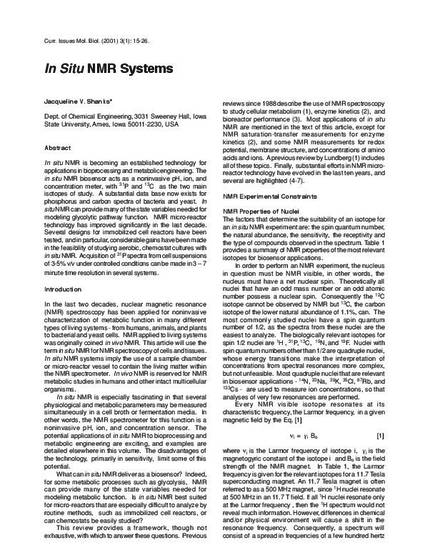
In situ NMR is becoming an established technology for applications in bioprocessing and metabolic engineering. The in situ NMR biosensor acts as a noninvasive pH, ion, and concentration meter, with 31P and 13C as the two main isotopes of study. A substantial data base now exists for phosphorus and carbon spectra of bacteria and yeast. In situ NMR can provide many of the state variables needed for modeling glycolytic pathway function. NMR micro-reactor technology has improved significantly in the last decade. Several designs for immobilized cell reactors have been tested, and in particular, considerable gains have been made in the feasibility of studying aerobic, chemostat cultures with in situ NMR. Acquisition of 31P spectra from cell suspensions of 3-5% v/v under controlled conditions can be made in 3 – 7 minute time resolution in several systems.
Available at: http://works.bepress.com/jshanks/10/

This article is from Current Issues in Molecular Biology 3 (2001): 15. Posted with permission.